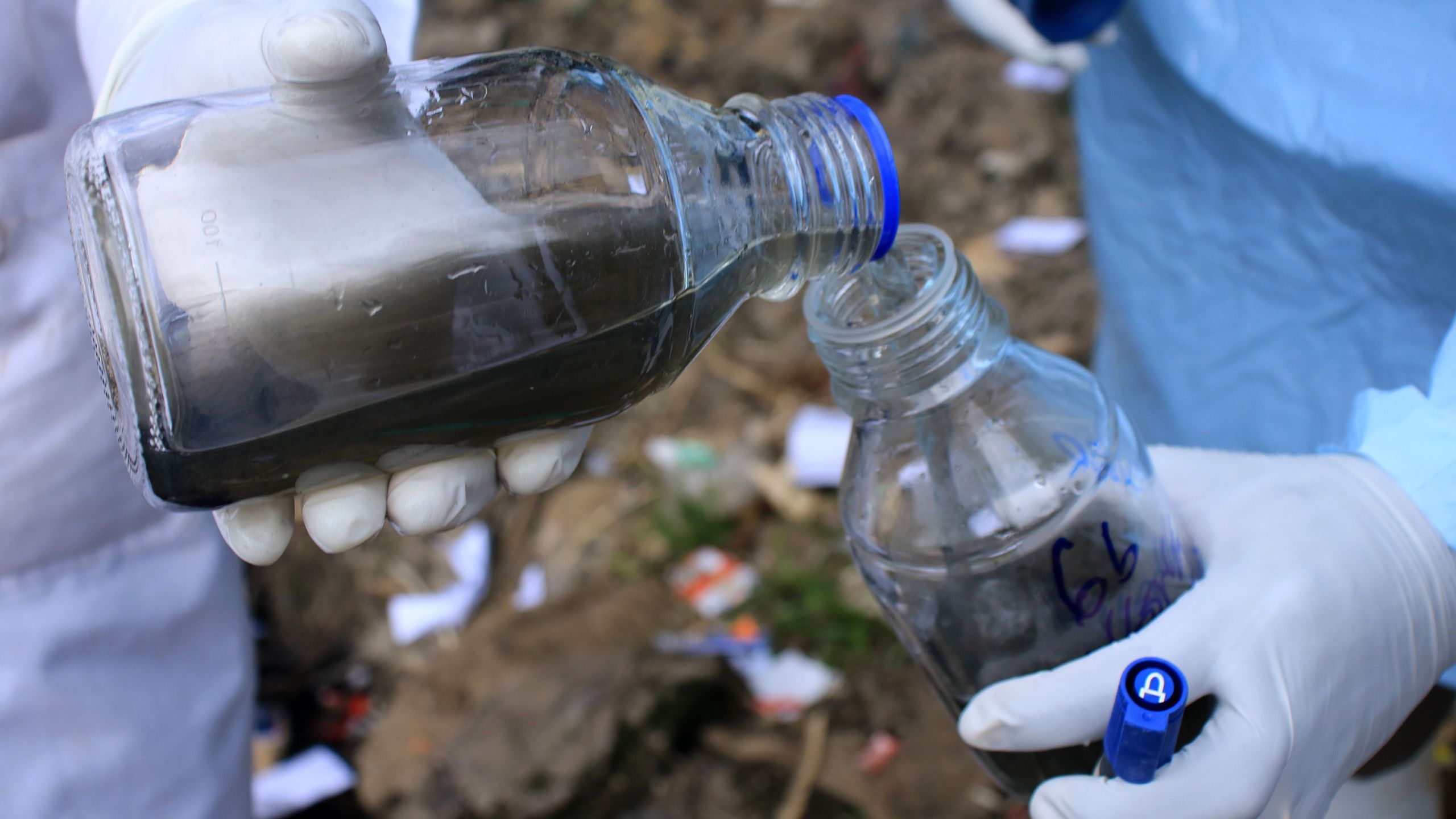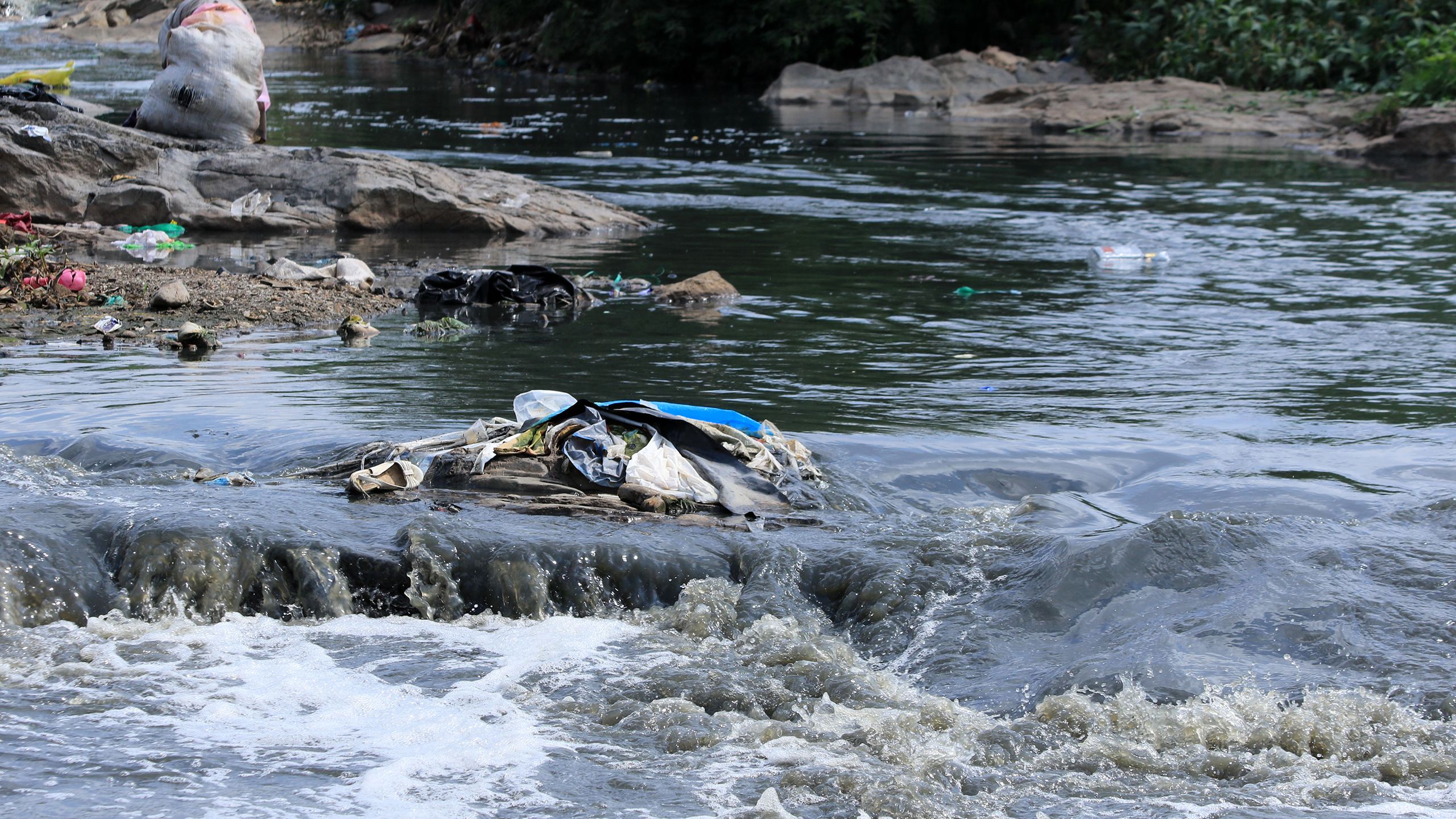Part two:
Six deadly metals

Metals found in the water play a big role in the upsurge of diseases.
It is not what is visible with plain eyes that should make you very afraid. The real threat is in what you cannot see in the water, plants and animals that depend on this river.
The Nation spent the past two months with a team of scientists and toxicology experts from the University of Nairobi, tracing Nairobi River from its source at Ondiri Swamp in Kiambu all the way down its 400-kilometre path to the Kenyan coast.
We collected samples of its waters as it snaked through the city centre and where tributaries from Mathare and Ngong rivers join it.
We tailed it further down as it grows into Athi River, past Fourteen Falls in Thika, down to where it feeds Thwake Dam in Makueni.
From here, we followed Kenya’s second biggest river as it traverses the country, into the Tsavo East National Park, collecting more samples, until it became Galana River, where the Galana-Kulalu irrigation scheme draws its water.
We then travelled the rest of its journey, down to its mouth where it bursts into the Indian Ocean at Sabaki, just 10 kilometres from Malindi town.
We observed the team of scientists plan, map out, then collect 49 samples from 10 locations carefully selected along the river. The samples were taken at Ondiri springs, Chiromo, Gikomba, Fourteen Falls, Dandora, Outer Ring, Ndwaru/Satellite, Thwake Dam and two points at Sabaki in Malindi.
We watched them collect fresh fish as it was removed from the water. They also collected several crops grown near the river; by farmers who use the water for irrigation. Among the crops sampled are kales, popularly known as sukuma wiki, spinach and indigenous vegetables like black nightshade, popularly known as managu.

Scientists with a water sample from Ngong River in Nairobi.
Scientists with a water sample from Ngong River in Nairobi.
We also collected aquatic animals, including crabs and cat-fishes, and sampled several deposits of sediments along the crocodile and hippopotamus-infested river, on rocks and on its bed.
We observed as the samples were flown back to Nairobi for testing and analysis, in an investigation that has unearthed how the sick river is quietly putting the lives of millions of Kenyans at risk.
In this investigation, the Nation tested for the presence of 12 different metals of toxicological importance using the East African standard known as procedure 67.
We tested for the presence of mercury, chromium, arsenic, cadmium, lead, selenium, copper, zinc, manganese, aluminium and barium using a method known as the Atomic Absorption Spectrophotometric (AAS).
We also analysed the metals according to the standards set by the National Environment Management Authority (Nema), using spectrophotometry methods.
Our results showed that there is no part of the river that is safe. Where one metal was missing, about three deadly others were present.
“Metals of great concern to human health include mercury, lead, arsenic and cadmium. They have no functional effects but are harmful to the body,” Prof James Mbaria, the lead consultant for this project, says.
“These heavy metals are toxic to humans partly due their ability to accumulate in biological tissues over time through a process known as bioaccumulation,” adds the pharmacology and toxicology expert from the University of Nairobi.
He says contrary to popular belief, no amount of boiling or cooking of water and food contaminated by these chemicals can stop them from harming the human body. In fact, heating only makes them more dangerous. On average, the Nation lab tests revealed, there were at least six deadly metals in every location.
Lead
Lead, which can damage almost all body systems, was present in seven out of the 10 water samples we collected. The heavy metal used to make bullets was also present at dangerous levels in two sediments and a crab we collected.
Lead is a strong poison that accumulates in the body if it is ingested through the mouth or inhaled. It can also get into the body through contact with an injured part of the skin.
Half of the water samples had lead at levels higher than the Kenya safe standard of 0.05 parts per million (ppm).
Parts per million (ppm), also illustrated as milligramme/litre (mg/l), is a weight-to-weight ratio used to describe concentrations. It is the number of units of mass of a contaminant per million units of total mass.
The places you are most likely to have lead poisoning were Ondiri Springs in Kikuyu (0.06ppm), Chiromo (0.06ppm), Gikomba (0.06ppm), Dandora (0.08ppm), and Malindi (0.06ppm).
Exposure to high levels of lead causes anaemia, weakness, kidney and brain damage. When it is excessive, it can cause death.

Trash in Nairobi River in Dandora.
Trash in Nairobi River in Dandora.
Selenium
The second chemical element we found in dangerous quantities was selenium. In all the locations selected, we found the concentration of the chemical used to make batteries, solar cells, alloys and glass as high as five times the recommended level.
The allowable levels in Kenya are 0.01ppm and anything above that is considered an overdose. Our samples had between 0.03 and 0.05ppm of the non-metallic element.
Selenium, at required levels, has positive effects on the body. It helps reduce stress and enhances immunity for patients with HIV, influenza, tuberculosis and hepatitis C. But too much of the element that has similar properties to arsenic can cause a condition known as selenosis, which manifests itself through hair and nail loss, garlic breath, fatigue and nerve damage.
Copper
Eight of the water samples also tested positive for copper, with five being unsafe for humans and animals.
Copper was detected at 0.06 ppm, which was slightly above the recommended 0.05 ppm in five samples drawn from Ondiri springs, Chiromo, Fourteen Falls, Dandora and Malindi.
We did not detect copper at Thwake Dam while Gikomba, International Livestock Research Institute or Satellite had the safe level of 0.05ppm.
In recommended levels, copper is good for human and animal health. Together with iron, copper helps the body form red blood cells and to maintain healthy bones, blood vessels, nerves and immune system.
But too much of it is toxic. Excess copper in the liver can impair its main function of detoxification (removal of toxins from the bloodstream). It overflows and builds up in the kidneys, brain and eyes. This extra copper can kill liver cells and cause nerve damage.
Aluminium
There was presence of aluminium in three of our samples, with Thwake Dam having 24 times more than what is recommended. The second most contaminated point was Malindi (18.5 times more) while, at 6.5 times more, Fourteen Falls was third.
The maximum recommended level is 0.1ppm but our tests detected 0.65ppm of it at Fourteen Falls, 1.85ppm at Malindi and 2.41ppm at Thwake Dam. Aluminium is the third most available element on earth and has a wide range of uses in the environment. But with an acceptable daily intake (ADI) of 10-50 milligrams (mg), it is of no known essential biological function in the human body. Sources of aluminium include vegetables and processed foods.
Aluminium dust is known to contaminate the environment and it mainly causes asthma.
Manganese
There was manganese contamination in all the sampling points at levels above the recommended 0.1ppm. Manganese, which is not found as a free element in nature, is toxic to animals and humans when consumed in high amounts. It affects the respiratory system and the brain.
When the transition metal used to make stainless steel and other alloys accumulates in the body, it results in hallucinations, forgetfulness, nerve damage and in some cases, tumour development.
Iron
Iron, the most abundant metal on earth, was shown to contaminate Nairobi River waters at six – representing 60 per cent – sampling points along the stream.
“Contamination of water with iron could have resulted from fuel burning and manganese-based pesticides,” Prof Mbaria says.
An overload of iron causes diabetes, nausea and vomiting. At the correct amounts, iron is useful in transportation of oxygen in blood cells.
“Arsenic has cancer-causing properties while cadmium is toxic to the kidney”
– Report
Fish, crabs and sediments
Fish, crabs and sediments collected also had 10 of the dangerous metals we tested for at different levels.
“The sediments and fish samples were found to contain chromium, arsenic, cadmium, lead, selenium, copper, aluminium, manganese, barium and iron at different levels,” the report reads.
The results of the crab sample obtained at Malindi revealed the other shocking finding of our investigation: It had arsenic levels of 3.82ppm, being 38 times higher than the World Health Organisation (WHO) and Food and Agriculture Organisation FAO (1996) recommendation of 0.1ppm.
“Arsenic has cancer-causing properties while cadmium is toxic to the kidney,” the report prepared for this investigation says.
The good news is that our fish samples did not have dangerous levels of arsenic.
Bacteria
We also tested the water for bacteria according to Kenyan standards. The parameters used were the total coliforms, total faecalstreptococcus and Escherichia coli.
Our test results showed that water samples collected from most parts of the Nairobi river, including Chiromo, Gikomba, Dandora and Outer Ring, had a very high concentration of bacteria.
Pesticides
The study found that no sample of pesticides contained levels beyond the recommended limit.
However, industrial chemicals that are hazardous to human health and capable of causing bronchitis and kidney stones were detected in trace amounts at different sampling points.
Nitrates
Nitrates were far below the tolerable level of 10 ppm at all the 10 sampled points.
Ammonia
Ammonia was discovered in most of the samples taken upstream, with levels higher than the recommended 0.5 ppm. High levels were at Dandora, Gikomba and Chiromo with 3ppm, 2.6ppm and 2.2 ppm, respectively.
Phenolic compounds
Phenolic compounds were found at unsafe levels in water at all the 10 sampled points. They are toxic to humans and animals at low levels, and have both short and long-term effects.
Cyanide
Cyanide was found to be, at all the 10 sampled points, above the critical levels of 0.01ppm.
Most of the cyanide contamination in Nairobi river, the Nation investigations revealed, is from industries mining metals, makers of organic chemicals, iron and steel plants. Other sources include vehicle exhaust and burning of waste.
Cancer and respiratory diseases
Experts say that poison from heavy metals, changing lifestyles and the increasingly polluted environment are playing the biggest role in the current upsurge of deadly diseases, including cancer, that are ravishing both the rich and the poor, from the posh estates of Nairobi to far-flung parts of Kenya.

